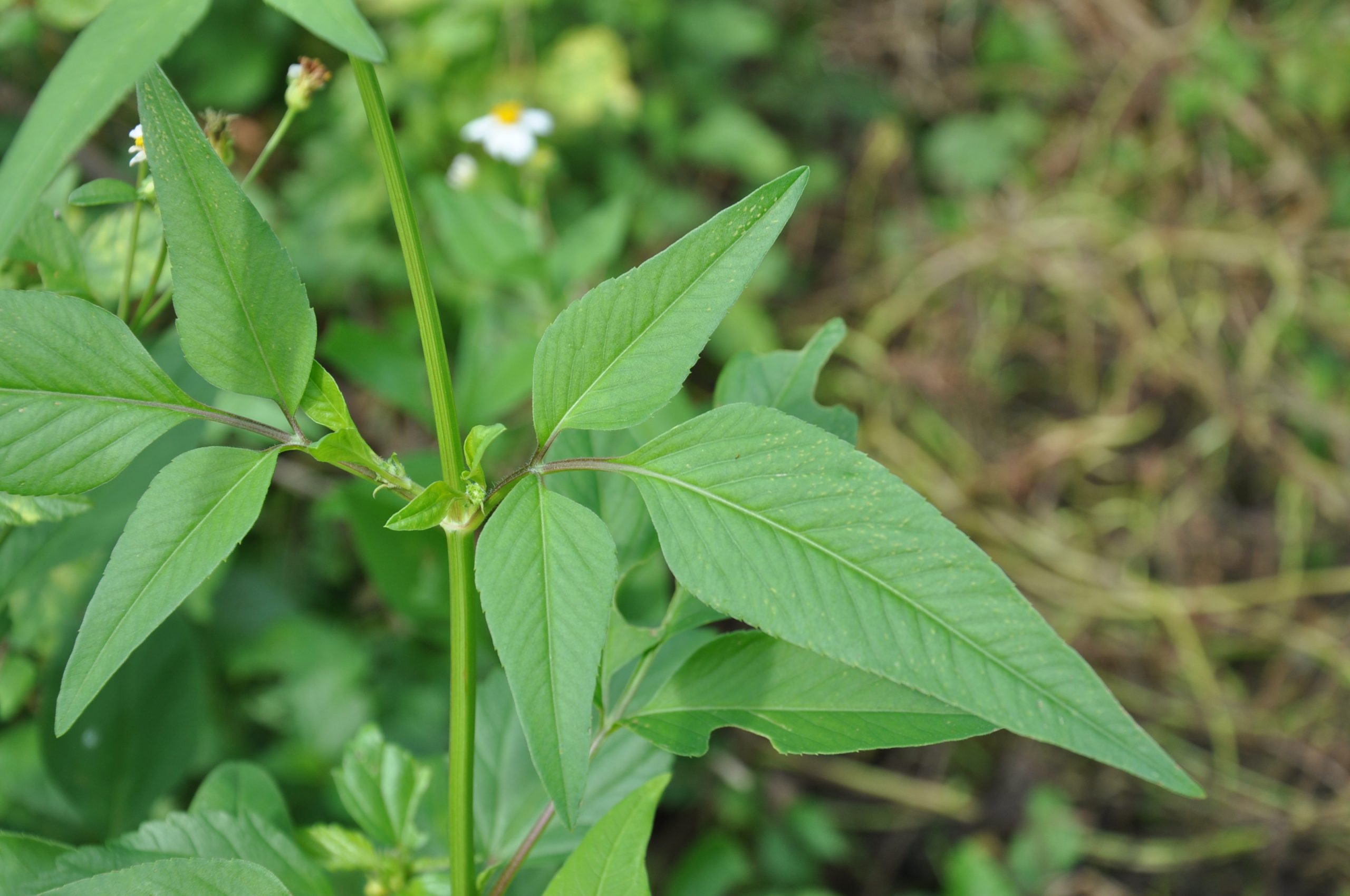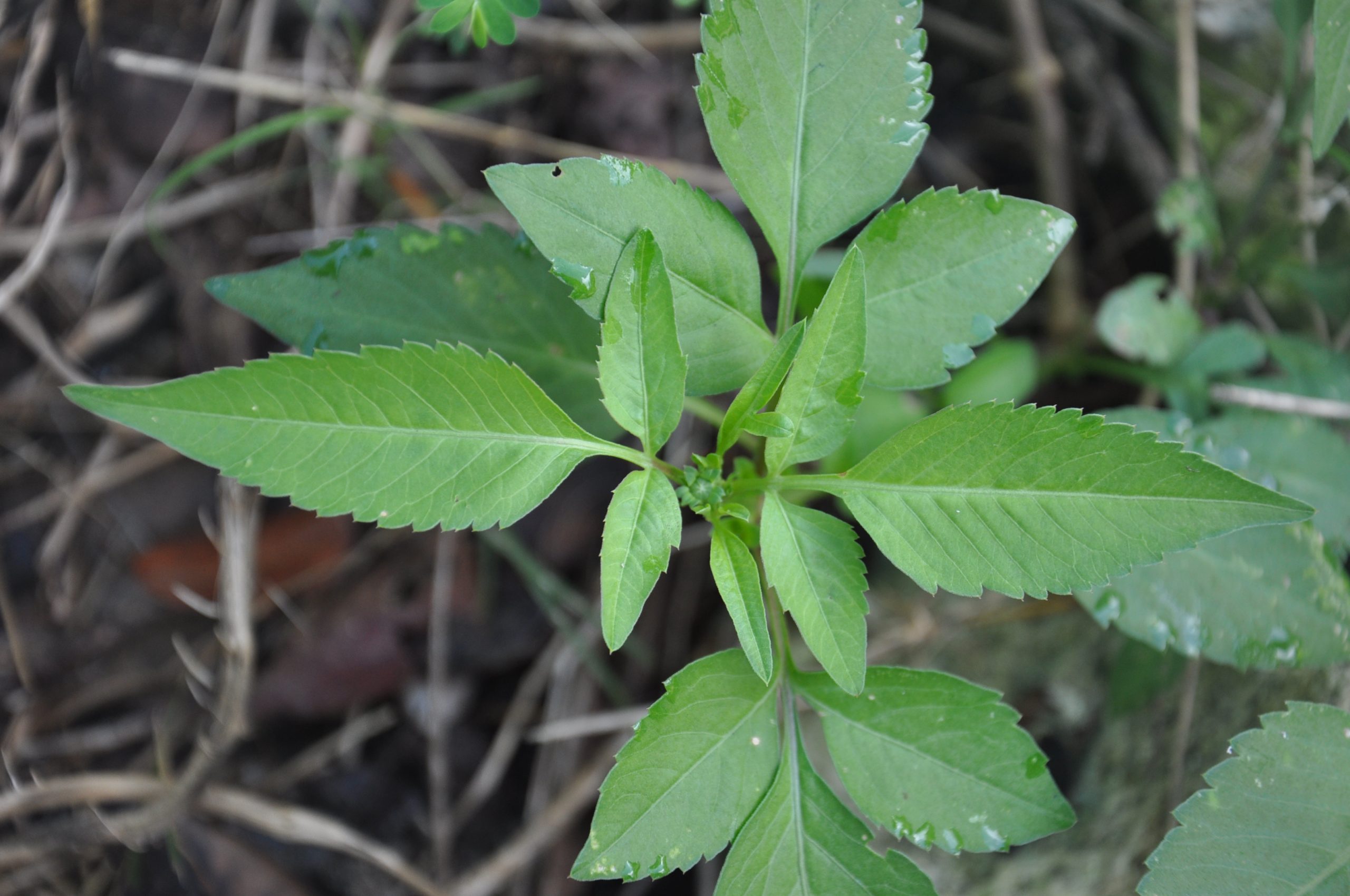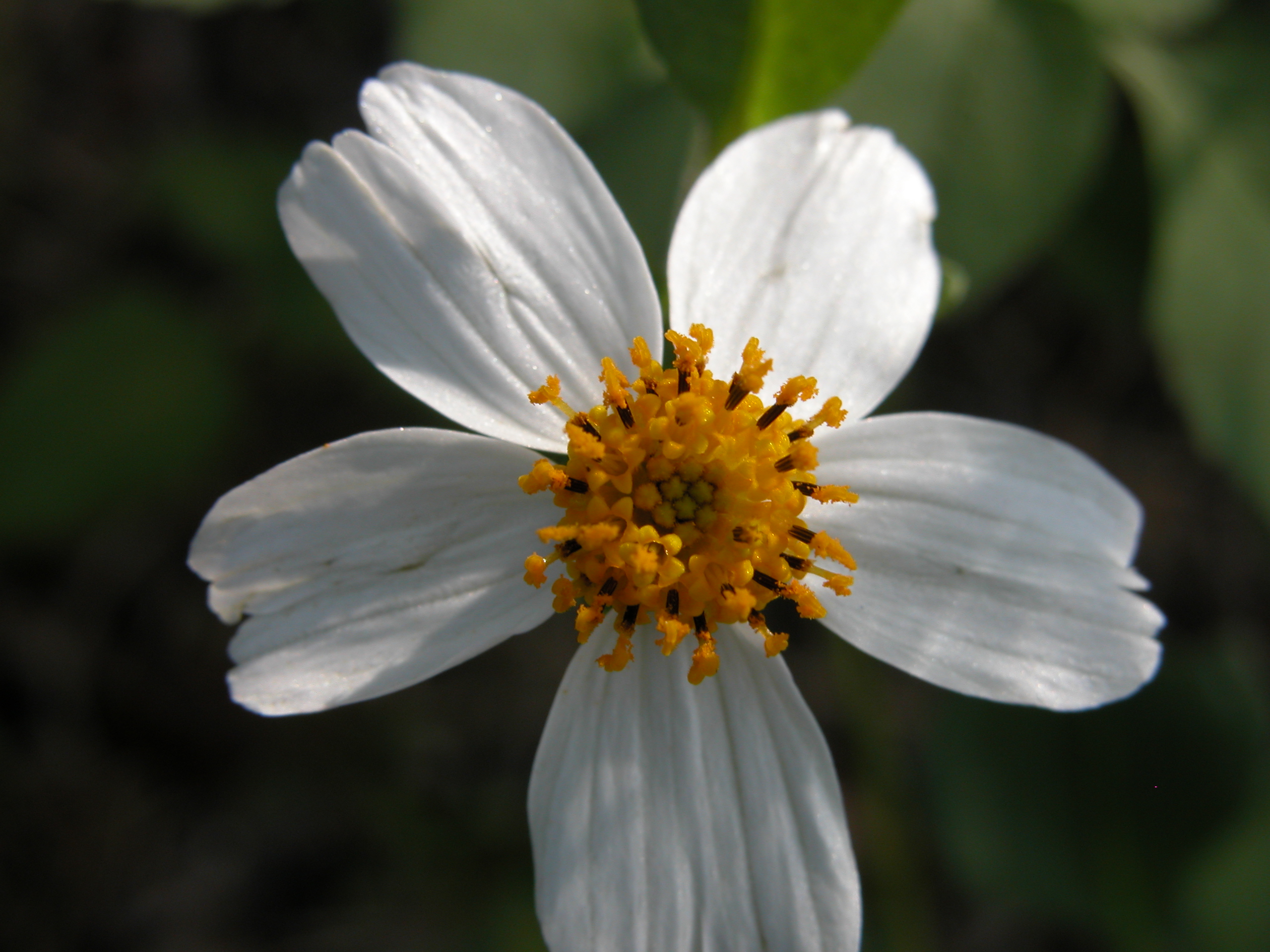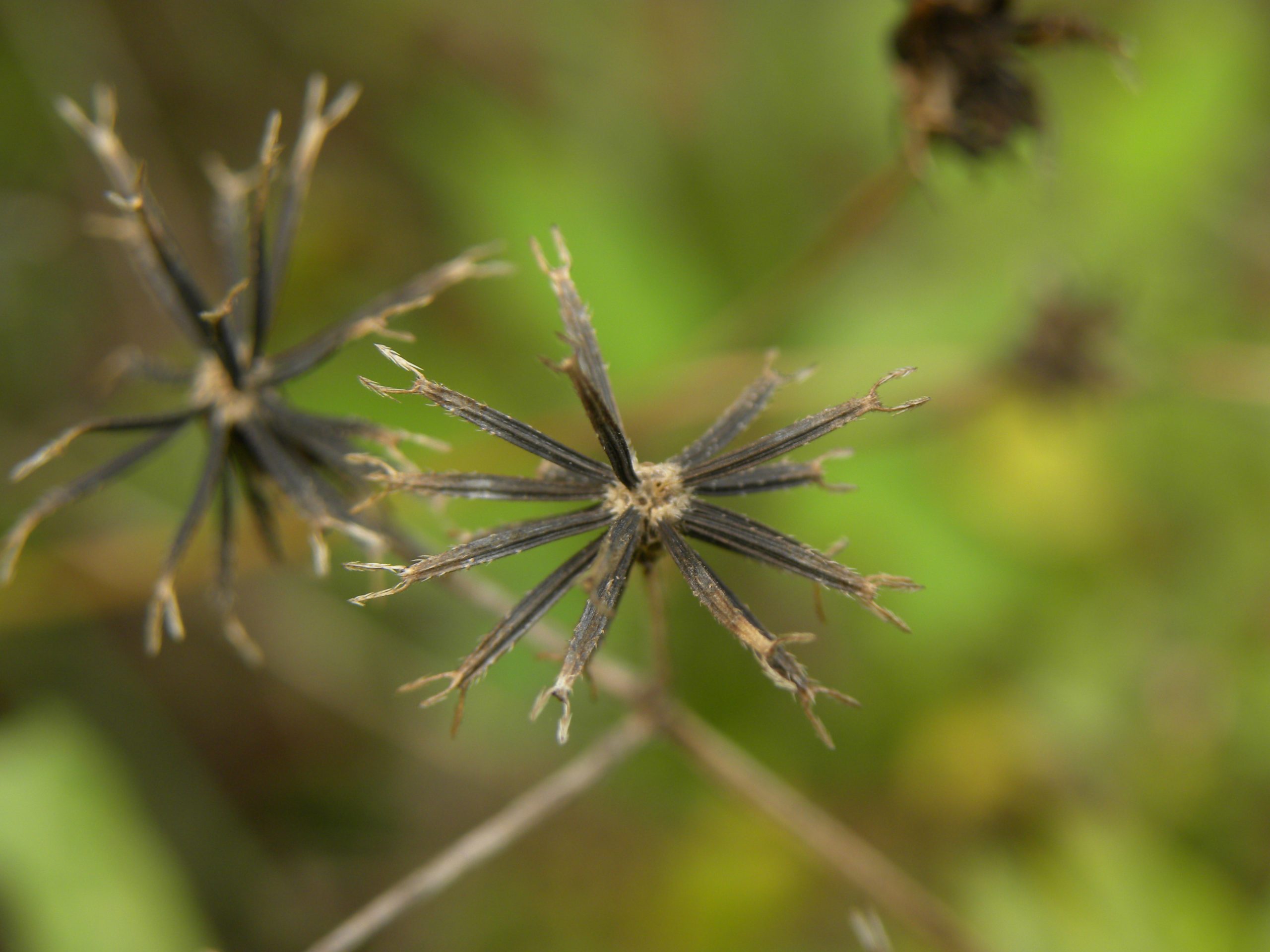Habit: Bidens alba is herbaceous annual, growing to 1 meter in height. The leaves are arranged oppositely and range from 3 lobed to odd pinnately compound with 3-5 leaflets. The leaflets are ovate to lanceolate, with an acuminate leaf apex and serrated leaf margin. The vegetative structures can be glabrous or covered with pubescence.
The (actinomorphic and zygomorphic) flowers are arranged in panicles of heads subtended an involucre made of 2 series of phyllaries: the outer series longer than the inner series. There are 5 or 6 six zygomorphic, white, flowers with the corolla up to 1 cm in length that occur to the edge of the head. The actinomorphic flowers occur in the center of the head, have a pappus of 2 -4 hairs and a yellow corolla with 5 fused petals forming a tube. There are 5 anthers fused to the corolla tube. The ovary is inferior and is an achene at maturity. The achenes have tubercles that assist in dispersal by attaching to passing animals.
Habitat: Bidens alba grows in Human Altered habitats such as yards, road sides and abandoned fields.
Distribution: Bidens alba occurs on all island groupings within the Lucayan Archipelago and tropical and subtropical regions of the world.
Medicinal/Cultural/Economic usage: Bidens alba is used medicinally in the Bahamas to treat circulatory problems (cooling of the blood), colds, fevers, and flu, dermatological issues, intestinal problems (worms and upset stomachs), and urinary tract complications. Bidens alba is used in the southern Caribbean to treat eye infections and in Africa to treat wounds and earaches.
The vegetative parts are also edible.



